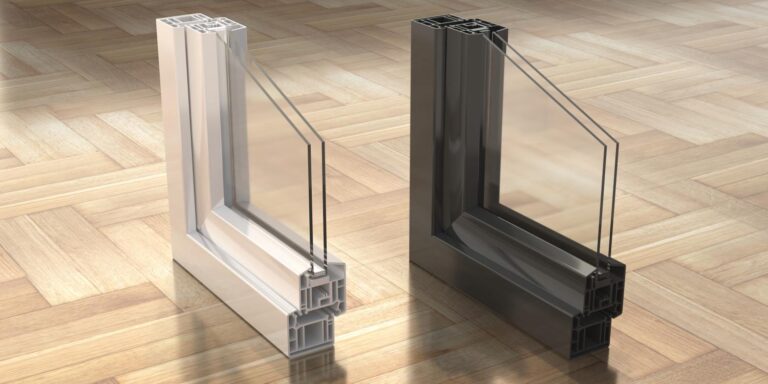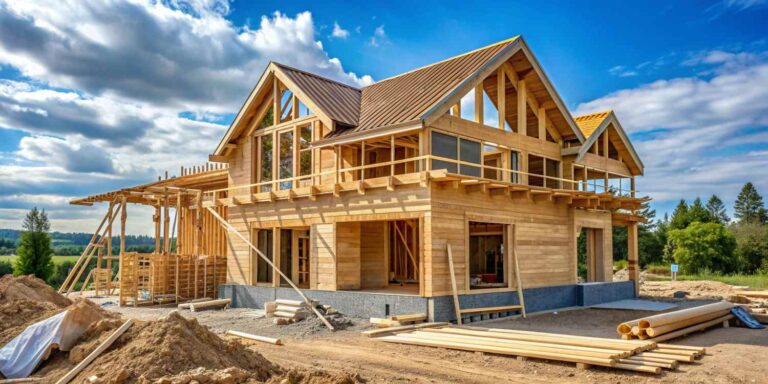- 17 September 2024
- 5 min read
Benefits and drawbacks of double glazed windows

Table of contents
Types of windows – double glazed, triple glazed, etc.
Windows are a critical component of any building, providing light, ventilation, and aesthetic appeal. They also play a significant role in energy efficiency. The choice of windows can affect a building’s overall energy consumption, comfort levels, and even its carbon footprint. Among the various types available, double glazed and triple glazed windows are especially noteworthy for their insulating properties. Here’s a deeper look into these and other types of windows:
Single glazed windows
Single glazed windows consist of a single pane of glass. They are the least expensive and least insulating option available, making them more common in older buildings or warmer climates where heating isn’t a major concern. The simplicity of their design does offer unobstructed clarity and ease of installation.
Double glazed windows
Double glazed windows feature two panes of glass with a layer of air or inert gas (such as argon or krypton) sealed between them. This design significantly reduces heat loss compared to single glazed windows, leading to better thermal insulation and energy efficiency. They also reduce noise pollution and provide enhanced security due to their thicker, tougher construction.
Triple glazed windows
Building on the benefits of double glazing, triple glazed windows include a third pane of glass, offering even greater energy efficiency. These windows are particularly effective in extremely cold climates, as they can dramatically reduce heat loss and help maintain a consistent indoor temperature. However, they are more expensive and heavier, which may require adjustments to window frames and surrounding structures.
Tinted and coated windows
Tinted windows use a film or a coating on the glass to reduce glare and block UV rays, making them ideal for areas receiving a lot of sun. Coated windows, such as low-emissivity (low-E) windows, have a microscopically thin coating applied to the glass. This coating reflects infrared light, keeping heat inside during winter and outside during summer, which improves the energy efficiency of the home.
Casement windows
Casement windows pivot on hinges at the side of the window frame, swinging outward like a door. They can be either single, double, or triple glazed and are known for providing excellent ventilation and sealing capabilities, as the window seal is typically very tight.
Sliding windows
Sliding windows open horizontally along a track. They are a popular choice for modern homes and can be equipped with double or triple glazing. Their design is particularly advantageous for homes with limited outdoor space since they don’t require any room to swing open.
Bay and bow windows
These windows project outward from the main walls of a building forming a bay in a room, offering a wide view of the outside and making a room appear larger. They can be configured with double or triple glazed panels and add a decorative touch to any home.
Benefits of double glazed windows
- Energy efficiency – double glazing significantly reduces heat loss, helping maintain a consistent indoor temperature and lower energy bills.
- Noise reduction – these windows provide excellent sound insulation, blocking external noise effectively.
- Reduced condensation – less likely to experience condensation build-up, which helps in preventing mold and mildew.
- Increased security – more secure than single-pane windows due to their thickness and robustness.
Drawbacks of double glazed windows
- Cost – higher initial investment compared to single glazing.
- Seal failures – if the seal around the glass fails, condensation can occur between the panes, necessitating repair or replacement.
- Less versatile in appearance – limited customization options compared to other window types.
- Weight – heavier, requiring more robust frames and support.
Where will double glazed windows work best?
Double glazed windows work best in regions with extreme temperatures, as they provide superior insulation. They’re ideal for reducing heating and cooling costs in homes and buildings that experience both hot summers and cold winters. Their noise reduction capabilities also make them advantageous in urban or noisy areas.
Why choose double glazed windows?
Double glazed windows are an excellent choice for enhancing a home’s thermal efficiency and comfort. They consist of two panes of glass with a gap in between, usually filled with air or gas, which acts as an insulating barrier. This setup significantly reduces the transfer of heat and cold, helping to maintain consistent indoor temperatures and reduce energy bills. Additionally, double glazed windows can greatly diminish outside noise, making them ideal for homes in busy areas. They also offer increased security due to their thicker, more robust construction, making them harder to break than single-pane windows.
Prices of double-glazed windows in the UK
In the UK, the cost of double glazed windows varies widely based on factors such as material, size, and custom features. Generally, prices start around £150 for basic uPVC windows but can rise to £600 or more for larger or bespoke designs. Aluminum and wooden frames tend to be pricier, potentially reaching up to £800 per window. Costs also include installation, which can significantly affect the overall price depending on the complexity of the job. Investing in double-glazed windows can lead to substantial energy savings, offsetting the initial expenditure over time.
Is it expensive to repair double glazed windows?
Doing repairs to double glazed windows can be moderately expensive, depending on the issue. If the problem is a broken seal, which leads to condensation between the panes, the entire sealed unit usually needs replacing rather than just repairing, adding to the cost of double glazed windows repair. Typical replacement costs for a pane can range from £100 to £350. More complex issues, like damage to the frame or specialized glass, can increase these costs further. However, compared to the cost of replacing an entire window, repair can often be a more cost-effective solution if the frame and hardware are still in good condition. Regular maintenance and timely repairs can extend the life of your windows and maximize your investment
You might be interested in...
- Building advice
- DIY

17 September 2024
Mounting your TV on the wall – all what you need to know!
Mounting your TV on the wall offers a sleek, space-saving solution, but it requires proper planning and execution. From selecting the right mount type and ensuring VESA compatibility to finding the perfect spot and safely installing the bracket, each step is crucial. This guide covers everything you need to know, including tools, installation steps, cable management, and troubleshooting tips, ensuring a secure, stylish setup for your home.
- Building advice

24 September 2024
Build a new house – how much money do you need?
To build a new house is a major investment, with costs varying depending on location, size, materials, and design. How much it is to build a new house, like really? In the UK, the average cost ranges from £1,800 to £3,000 per square metre, meaning a 3-bedroom house could cost between £180,000 and £300,000. Additional expenses include planning permissions, architect fees, and finishing touches like landscaping. This guide explores the factors that affect the total cost, helping you estimate how much money you’ll need for a new build.
- Building advice
- DIY

17 June 2024
Applying wallpaper on a chimney breast – a how-to guide
Wallpapering a chimney breast can transform your room’s focal point into a striking feature. Begin by measuring the chimney breast’s width and height to calculate how much wallpaper you’ll need. Choose a durable, heat-resistant wallpaper suitable for high temperatures. Ensure the surface is clean, dry, and smooth; repair any flaws before you start. Apply an even layer of adhesive directly to the wall. Align the first strip at the center of the chimney breast, smoothing it outwards to avoid air bubbles. Repeat with additional strips, ensuring the patterns match. Trim excess wallpaper at the edges for a neat finish.